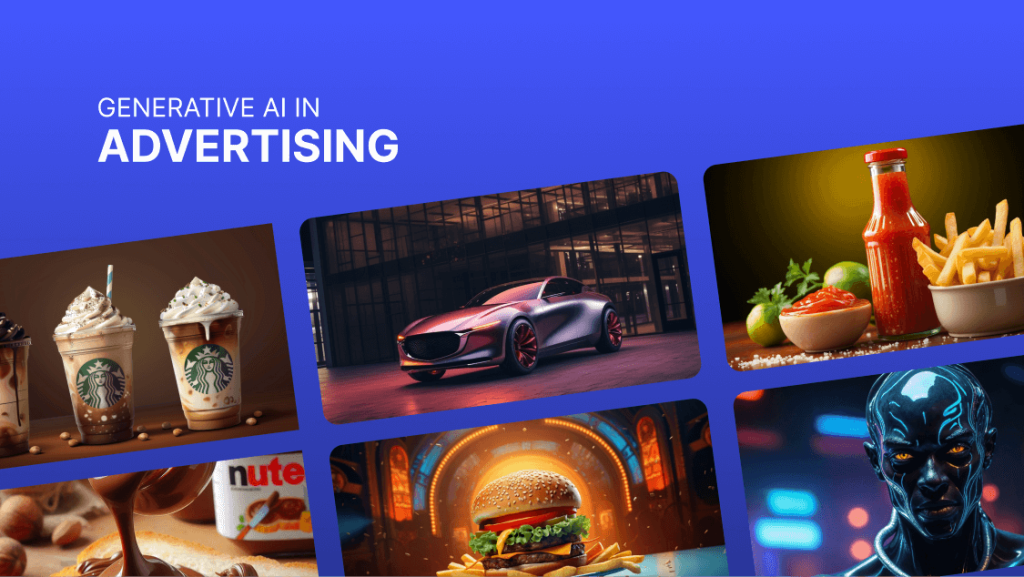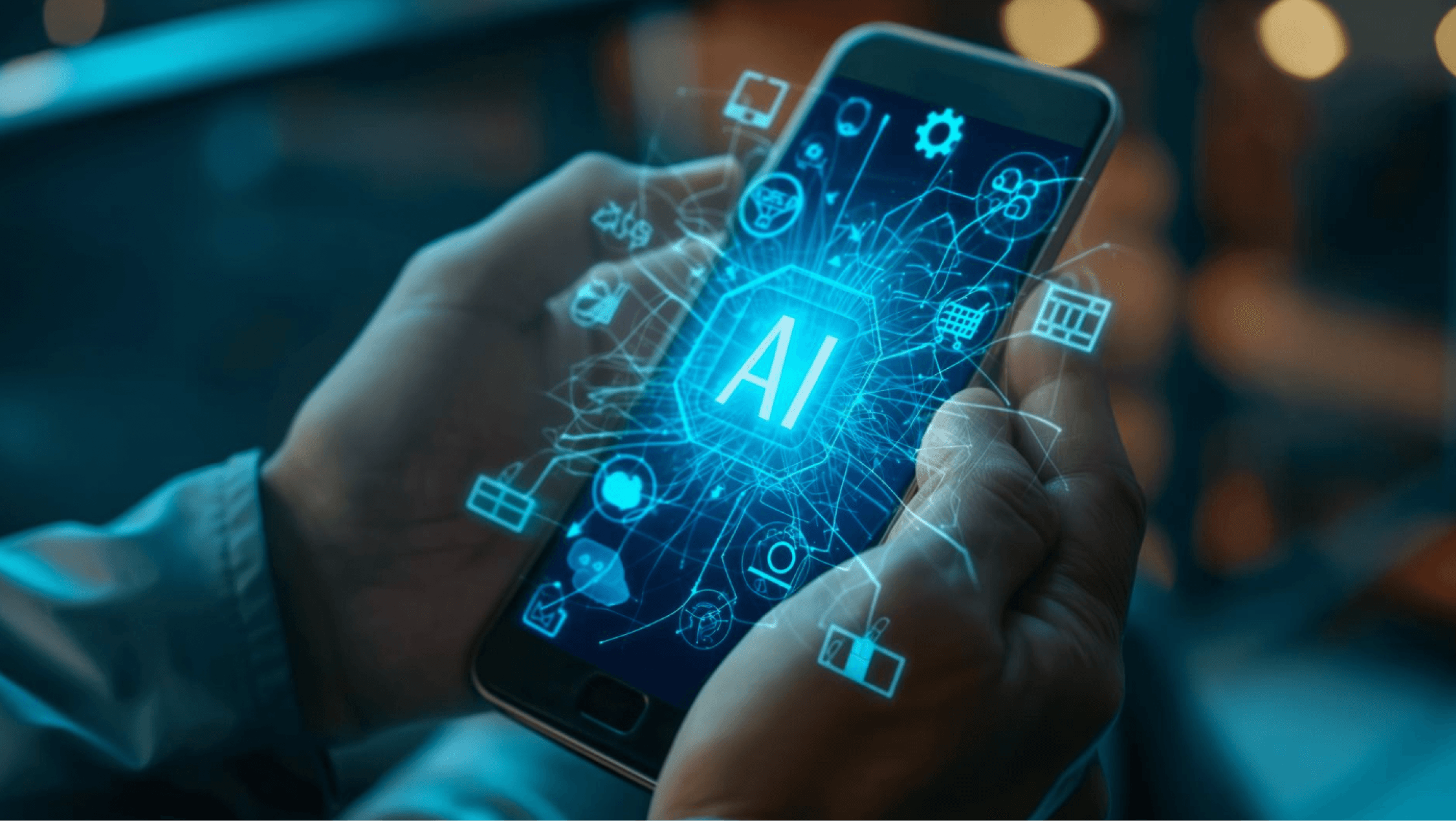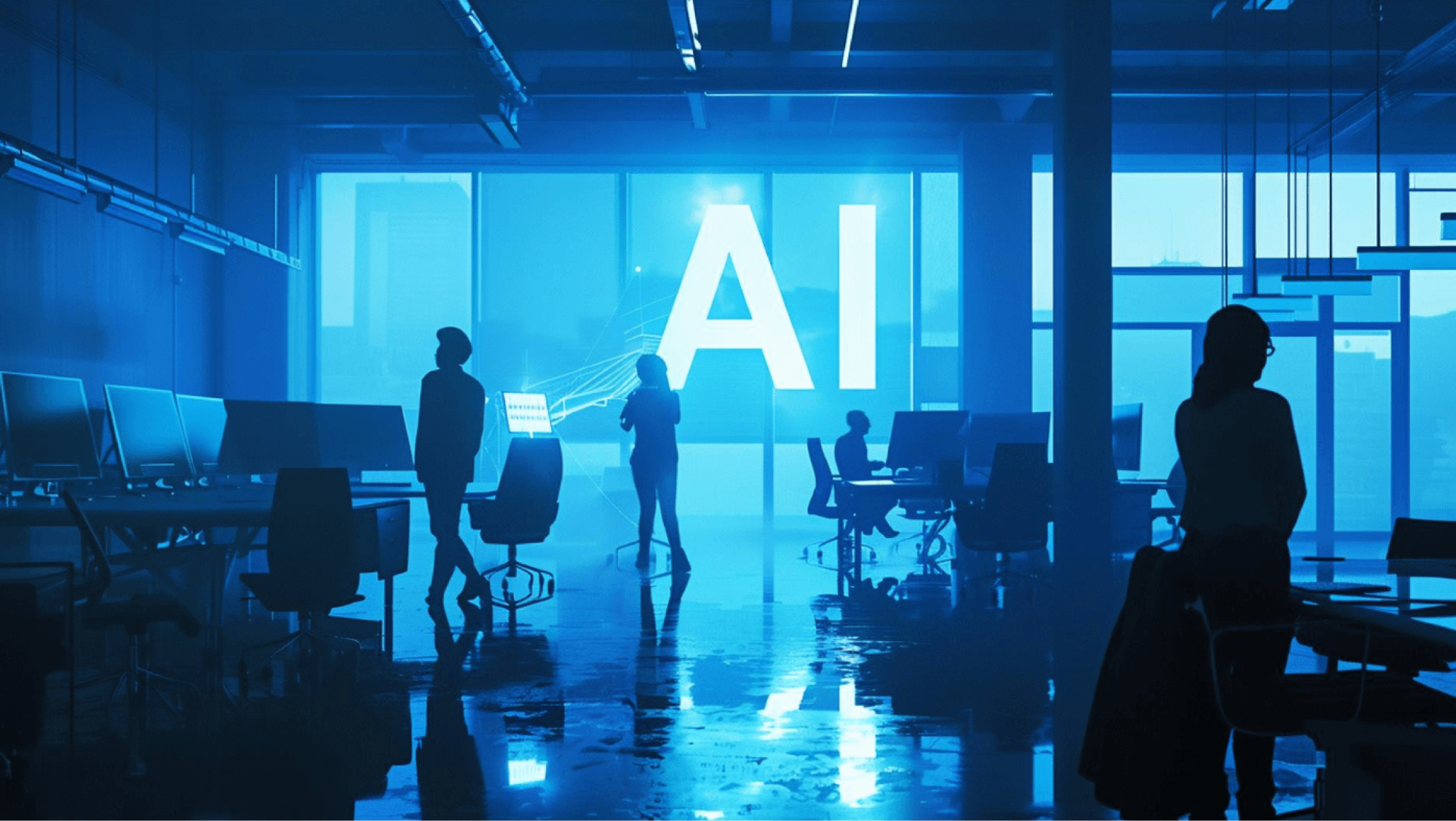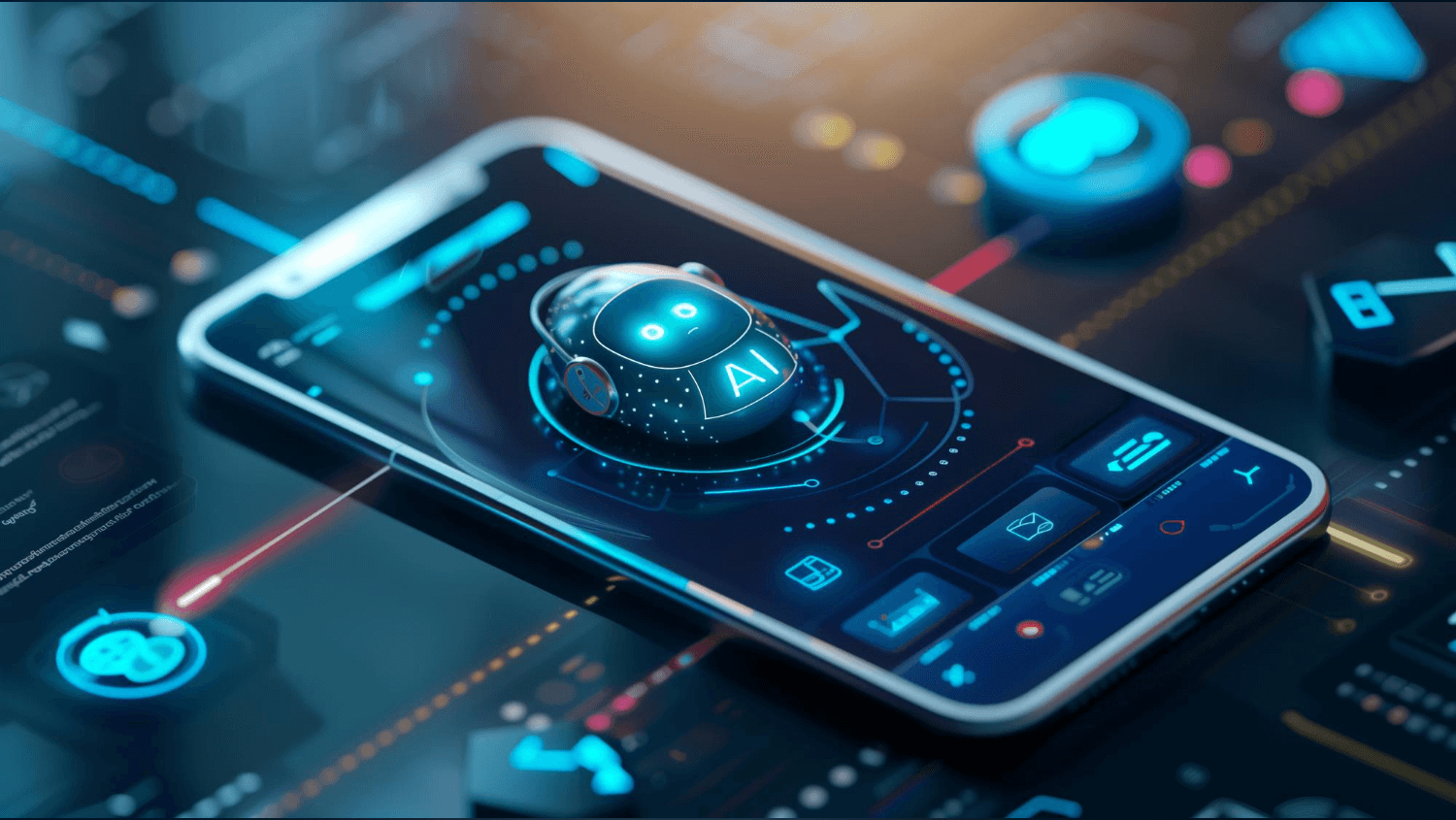AI is making huge waves in marketing, and its impact on advertising is undeniable. In fact, the global market for AI in advertising was valued at $15.84 billion in 2021 and is expected to skyrocket to $107.5 billion by 2028. That’s massive growth, and it’s not hard to see why.
Ad campaigns are evolving rapidly with the help of AI and machine learning, enabling brands to optimise advertising campaigns with precision. Artificial intelligence is becoming a key player in advertising, transforming how brands handle ad placement and create engaging ad creatives.
Let’s break down eight AI use cases that creative agencies need to know to stay ahead of the curve. This isn’t just a tech trend—it’s the future of advertising, and those who adopt it early are bound to reap the rewards.
8 Use Cases of Generative AI in Advertising
Use Case 1: Text Generation & Content Creation
A. Content Writing
Generative AI tools are transforming how we create content. They generate articles and blog posts tailored to specific topics, saving time while sparking creativity. With AI, you get high-quality narratives quickly, making meeting deadlines and engaging readers easier.
Tools that can help you
- Jasper: AI-powered writing assistant that helps generate high-quality content quickly.
- Copy.ai: Simplifies content creation with AI for blog posts, social media, and more.
- Writesonic: An AI tool that generates articles, ads, and product descriptions in seconds.
- Rytr: AI writer that creates engaging content for blogs, emails, and social media.
B. Script Writing
AI can outline and suggest dialogue for video or podcast scripts, acting as a helpful co-writer. This collaboration improves storytelling and streamlines the writing process, allowing you to explore new ideas without the usual pressure, especially when producing conversion-focused ad creatives or video ads.
Tools that can help you
- ScriptAI: AI-based tool designed for generating film and video scripts.
- ChatGPT: Versatile AI for drafting dialogue, brainstorming plot ideas, and scriptwriting.
- Celtx: Collaborative tool for scriptwriting, pre-production, and more.
- Final Draft: Industry-standard software for professional screenplay writing.
C. Ad Copy
Creating effective ad copy is crucial for reaching your audience. Generative AI analyses consumer behavior and successful campaigns to generate catchy messages. This ensures your ads capture attention and drive conversions, acting as a smart strategist for your brand, whether for ad spend optimisation or digital advertising efforts.
Tools that can help you
- Phrasee: AI that creates impactful, brand-consistent ad copy at scale.
- CopySmith: AI-driven platform for crafting attention-grabbing ad copy.
- Snazzy AI: AI that generates creative, engaging advertising copy in seconds.
D. Product Description
In advertising, compelling product descriptions are essential. AI generates clear and persuasive descriptions that highlight key features and benefits. This not only ensures consistency but also improves the customer experience, especially for brands focused on customer lifetime value or exploring the complexities of the advertising industry.
Tools that can help you
- Pimcore: Content management system with tools for writing persuasive product descriptions.
- Writesonic: Produces captivating product descriptions that drive sales.
- ContentBot: AI writer designed for crafting precise, creative product descriptions.
Use Case 2: Image Generation & Concept Creation
A. Ad Creative
Artificial Intelligence is changing the way brands create ad visuals. By using tools like meta ads and other AI tools, brands can generate eye-catching images that align with specific campaign goals.
These advertising tools not only save time but also boost the effectiveness of paid advertising by creating engaging ad content that resonates with the target audience.
Tools that can help you
- DALL-E: AI model that generates unique images from text prompts for ad creatives.
- Canva: Easy-to-use design tool with customizable templates for ad visuals.
- DeepArt: AI-based tool that turns photos into artwork using various artistic styles.
- Artbreeder: AI-powered platform that blends images to create new, creative visuals.
B. Visual Branding
Consistency in visual identity is crucial for brand recognition. Generative AI tools assist in designing logos, color schemes, and graphics that speak directly to target audiences, providing tailored visuals that ensure a unique and memorable brand presence.
Predictive analytics can also be applied to further refine these assets for more dynamic ads and more relevant ads.
Tools that can help you
- Looka: AI-powered platform for creating professional logos and brand identities.
- LogoMaker: User-friendly tool for designing logos quickly and affordably.
- Brandmark: AI-based service that generates custom logos and branding elements.
- Hatchful: Free logo design tool by Shopify, ideal for startups and small businesses.
C. Virtual Try-On
Virtual try-on technology allows customers to experiment with products in a digital space, enhancing their shopping experience. This interactive feature enables users to visualize how products will look on them before making a purchase.
A prime example is Sephora’s Virtual “In-Store” Experience, where AI-driven consultations allow customers to try different makeup looks and receive personalized product recommendations. This innovative approach increases customer engagement and drives significant revenue growth.
Tools that can help you
- ModiFace: AI-powered tool that allows users to virtually try on makeup and beauty products.
- Perfect Corp.: Leader in AR-powered virtual try-on for beauty and fashion brands.
- YouCam Makeup: Virtual beauty try-on app for makeup, hair color, and accessories.
D. Product Imagery
High-quality product images are essential for capturing customer interest. AI can generate realistic visuals that showcase products from various angles and in different contexts, providing customers with a clear understanding of their options.
Tools that can help you
- Pixelz: Provides AI-powered retouching and editing services for e-commerce product images.
- Remove.bg: AI-based tool that removes image backgrounds, ideal for product photography.
- Fotor: Online photo editor that enhances product images for marketing purposes.
- DeepImage: AI-powered platform for upscaling, enhancing, and retouching product images.
EXAMPLE
Brands like Heinz, Nestle and Delta AI Photography
- HEINZ
Heinz used generative AI to generate creative interpretations of its iconic ketchup bottle, producing abstract yet instantly recognizable imagery that caught attention.

- NESTLE AD
Nestlé’s A.I. project reimagines Johannes Vermeer’s iconic painting, The Milkmaid, giving it a modern twist while preserving its classic essence.

This fresh take, developed by Ogilvy Paris, promotes La Laitière yogurt, which has historically used milkmaid imagery in its branding.
- DELTA AND THE POWER OF AI PHOTOGRAPHY
Delta Airlines is using AI-driven photography to completely change how they show off travel destinations. They’re capturing some seriously stunning shots that make you want to pack your bags right away.
Use Case 3: Video Generation
A. Video Ads
Generative AI tools are paving the way for the creation of video advertisements. By automating the production process, brands can generate eye-catching ads that resonate with their target audience, ultimately driving engagement and conversions.
Tools that can help you
- Magisto: AI-powered video editor that creates engaging video ads automatically.
- Animoto: Easy-to-use platform for creating professional video ads with customizable templates.
- InVideo: Versatile tool for making video ads with rich templates and customization.
- Pictory: AI-based tool to turn scripts into compelling video ads quickly.
B. Video Editing
Video editing can be a time-consuming task, but AI simplifies it. With the help of a generative AI tool, brands can quickly compile, trim, and enhance footage, ensuring their videos are polished and professional without extensive manual effort.
Tools that can help you
- Descript: AI-powered audio and video editor with transcription and editing features.
- Adobe Premiere Pro: Industry-standard video editing software with advanced features.
- Kapwing: Online video editor that offers easy-to-use tools for creators.
- Lumen5: AI-powered platform for turning articles or content into engaging videos.
C. Product Demos
Creating engaging product demonstration videos is essential for showcasing features and benefits. AI can streamline the production of these demos, making them visually appealing and informative, helping customers understand products better before making a purchase.
Tools that can help you
- Synthesia: AI-based tool for creating product demo videos with AI avatars.
- Vidyard: Video platform designed for creating and sharing product demo videos.
- Veed.io: Easy-to-use video editing tool ideal for creating product demonstrations.
- Promo: Marketing-focused tool to create professional product demo videos.
D. AI Avatars
AI avatars are becoming a game-changer in video content creation, enabling brands to produce personalized videos efficiently.
For example, Cyber Inc. utilizes Generative AI to create video courses at scale, allowing them to offer tailored learning experiences to their audience without the need for extensive resources.

Tools that can help you
- Synthesia: Leading platform for creating realistic AI avatars for video content.
- Hour One: AI-powered avatars for professional business and brand communication.
- DeepBrain: Creates AI avatars with natural movements and speech for videos.
E. Deepfake
While deepfake technology has impressive capabilities for creating realistic video content, it raises significant ethical considerations.
The potential for misuse, including misleading information and impersonation, necessitates responsible use and clear guidelines to prevent harm while harnessing its creative potential.
Tools that can help you
- DeepFaceLab: Advanced deepfake creation tool for generating realistic face swaps.
- Zao: AI-powered app that allows users to swap faces into popular video clips.
- Reface: App for swapping faces in videos and GIFs for fun or creative content.
- Faceswap: Open-source deepfake software for creating face-swap videos.
EXAMPLE
Morgan’s Deepfake project is a fascinating exploration of AI technology and its implications. By using deepfake techniques, Morgan creates realistic video content that features iconic figures or fictional characters in new contexts.
It raises questions about authenticity and representation while showcasing the potential of Generative AI in storytelling.
Use Case 4: Music Generation
A. Sound Generation
AI sound generation tools create unique audio elements, enhancing the auditory experience of various media. These tools can produce a wide range of sounds, from ambient effects to complex soundscapes, made to specific projects.
Tools that can help you
- AIVA: AI composer that generates unique music for various creative needs.
- Amper Music: AI-powered music creation tool for content creators and marketers.
- Soundraw: AI music generator for creating customizable soundtracks.
- JukeBox: OpenAI’s AI model for generating music, including raw audio and lyrics.
B. Voice-Over
With advancements in AI voice synthesis, generating high-quality voice-overs has never been easier. Brands can produce engaging audio narratives quickly, reducing the time and cost associated with traditional voice-over recording while maintaining a professional sound.
Tools that can help you
- Descript: AI-based tool that allows voice editing and dubbing in video projects.
- Murf.ai: AI voice generator for creating lifelike voice-overs for content.
- Replica Studios: AI-powered platform for generating voice-overs with virtual actors.
- Voicemaker: Tool for generating natural-sounding AI voice-overs in multiple languages.
C. Background Music
AI can compose original background music that perfectly complements visual content. This not only saves time but also ensures that the music aligns with the mood and tone of the project, increasing audience engagement and emotional response.
Tools that can help you
- Soundstripe: Subscription service providing high-quality royalty-free music.
- Suno: AI-driven music generator that creates custom background music.
- Jukedeck: AI-powered platform for creating royalty-free background music.
- Audo: AI-based audio enhancement and background music creation tool.
Use Case 5: AI Chatbots for Customer Service
AI chatbots are transforming customer service by providing immediate, round-the-clock support. These intelligent systems can handle a variety of inquiries, from answering frequently asked questions to offering personalized recommendations, all while improving customer satisfaction.
By automating routine tasks, chatbots free up human agents to focus on more complex issues.
Tools that can help you
- Intercom: Conversational AI chatbot for customer support and engagement.
- Zendesk Answer Bot: AI-powered bot that resolves customer queries automatically.
- Ada: AI chatbot designed to automate customer service with a human touch.
- LivePerson: Conversational AI platform that supports customer service across channels.
EXAMPLE
Sephora leverages the AI chatbot Kik to improve customer engagement. This innovative tool not only connects customers with product information but also facilitates live interactions with influencers, making the shopping experience more interactive and personalized.

Use Case 6: Hyper-Personalization of Ads
Hyper-personalization takes targeted advertising up a notch by using AI to prepare content made to individual preferences and behaviors.
This makes the customer experience much better, as ads become more relevant and engaging. By analyzing tons of data, brands can deliver personalized messages that really connect with their audience.
Tools that can help you
- Dynamic Yield: AI-powered personalization platform that delivers tailored ads and experiences across web, mobile, and email.
- Persado: Uses AI to generate personalized ad copy that resonates with specific audiences based on emotional triggers.
- Optimizely: AI-driven platform for creating personalized customer experiences and ad campaigns with real-time experimentation.
- Segment: Allows businesses to collect, unify, and personalize customer data for creating hyper-targeted ads.
EXAMPLE
A great example of hyper-personalization is the SRK Cadbury ad, where AI helps create messages that feel personal and relatable to viewers.

Zomato is doing something similar with AI-powered campaigns featuring Hrithik Roshan, making content to match customer preferences, which boosts both engagement and brand loyalty.

Use Case 7: Spy on the Competition’s Ad Strategy
Keeping tabs on competitors is essential for any brand wanting to stay ahead. AI tools can help analyze their ad strategies by pulling insights from different platforms, letting brands spot trends, successful tactics, and areas where they can improve.
With advanced analytics, businesses can track how competitors’ ads are performing—like engagement rates and ad spending. This intel helps brands fine-tune their own advertising strategies, making sure they stay relevant and effective.
Tools that can help you
- Adbeat: Provides insights into competitors’ ad strategies, including where their ads are placed and their performance metrics.
- SimilarWeb: Helps analyze competitors’ ad traffic sources, audience demographics, and strategies across channels.
- SEMrush: Comprehensive tool for monitoring competitors’ ad campaigns, keyword usage, and performance analytics.
Use Case 8: Sentiment Analysis
In today’s world, social media is like a treasure trove of public opinion. Brands can use sentiment analysis to figure out how customers really feel about their products and overall image.
By digging into comments and interactions, businesses can see if the sentiment is positive, negative, or neutral, which helps them respond quickly and make smart adjustments.
Tools that can help you
- MonkeyLearn: AI-powered platform for analyzing sentiment in text, allowing teams to gauge audience reactions to ads.
- Lexalytics: Uses AI to analyze text data and extract sentiment insights from customer feedback and ad campaigns.
- Brandwatch: Provides real-time sentiment analysis to track brand perception and responses to advertising.
- Hootsuite Insights: Offers social listening and sentiment analysis to help measure audience reactions to ads on social media platforms.
EXAMPLE
Tools like the ThumsUp Believer Bot exemplify the power of sentiment analysis. This AI-driven bot can sift through social media conversations, identifying trends and sentiments related to specific campaigns or brand initiatives.
Quipster understands the importance of real-time feedback and sentiment tracking. Our platform helps businesses keep a pulse on social chatter, making it easy to understand how their audience feels.
With these insights, brands can build stronger relationships and make smarter decisions that really connect with their customers.
Conclusion
So, as we wrap things up, it’s pretty clear that AI in advertising is not just a trend; it’s genuinely transforming the industry. If you’re in the creative space, especially in agencies, this is something you can’t afford to ignore.
What’s fascinating here is how machine learning and artificial intelligence are working behind the scenes. They’re making it easier for brands to run targeted advertising campaigns that resonate with people. We’re talking about better ad placement, where your content lands exactly where it needs to be. And when it comes to creating engaging ad creatives, AI is stepping up its game. Using AI advertising tools that can help you generate ad creatives on the fly, making the whole process quicker and more efficient.
The future of advertising is looking bright and incredibly innovative, all thanks to generative AI. So, let’s gear up to harness these tools and reshape the way we connect with our audiences. Whether you’re a marketer, a brand manager, or someone just interested in the future of advertising, there’s so much potential here.
Boost Your Creative Process with Wow Labz
AI is moving fast, and keeping up with the latest tools can feel like a full-time job. But here’s the thing: when you know how to use AI right, it’s not just about keeping up—it’s about speeding ahead. It’s all about making your creative process smoother, faster, and way more impactful.
At Wow Labz, we work with creative teams to help them tap into AI in a way that actually makes a difference. Think less time spent on repetitive tasks and more time focusing on the fun stuff—creating. And the best part? The quality of your work goes up, too.
So, if you’re looking for a partner who gets how to integrate AI seamlessly into your creative workflow, we’re here for that. Connect with Wow Labz and turn those big ideas into next-level, AI-powered results.







